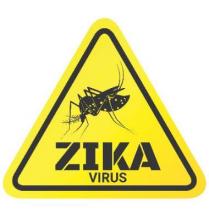The New York City Department of Health and Mental Hygiene (DOHMH) will implement a sentinel surveillance system to detect cases of local mosquito-borne transmission of Zika virus for the upcoming peak mosquito-biting season.
With the large number of people who travel frequently from New York City to active Zika virus transmission areas, DOHMH has chosen 21 primary care clinics and emergency departments as the sentinel sites across all five New York City boroughs. Once any suspected cases are reported to DOHMH, urine will be obtained for reverse transcription–polymerase chain reaction (RT-PCR) testing.
During Jan. 1.–June 17, 2016, DOHMH coordinated diagnostic laboratory testing of 3,605 patients with travel-associated exposure, including 182 (5.0%) who had the Zika virus infection. Out of the 182 patients, 20 (11.0%) were pregnant at the time of diagnosis and two cases of Zika virus–associated Guillain-Barré syndrome were diagnosed.
“Because of the known potential for Aedes mosquitoes to transmit Zika virus among humans, the anticipated large number of imported human cases into NYC, and the temporal lag between viremia and disease diagnosis in an infected patient, DOHMH is augmenting its mosquito control program, specifically source control, as well as larviciding and adult mosquito control,” Dr. Christopher T. Lee and his associates wrote in the Morbidity and Mortality Weekly Report.
Additionally, the National Institutes of Health (NIH) is partnering with the Oswaldo Cruz Foundation (known as Fiocruz) to begin a multi-country study to investigate the magnitude of health risks that the Zika virus poses to pregnant women and their developing fetuses and infants. The study will begin in Puerto Rico and expand to other locations in Brazil, Colombia, and other areas impacted by active local transmission of the virus.
“This study, in partnership with NIH, is essential to elucidating the scientific complexity of the Zika virus,” Fiocruz President Paulo Gadelha said in a statement. “It will be fundamental to developing prevention and treatment strategies against the disease.”
Read the full report on the New York City Zika experience in the Morbidity and Mortality Weekly Report (doi: 10.15585/mmwr.mm6524e3).


